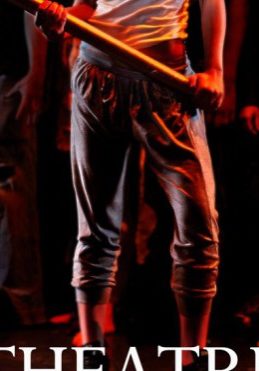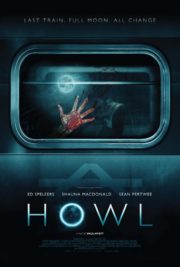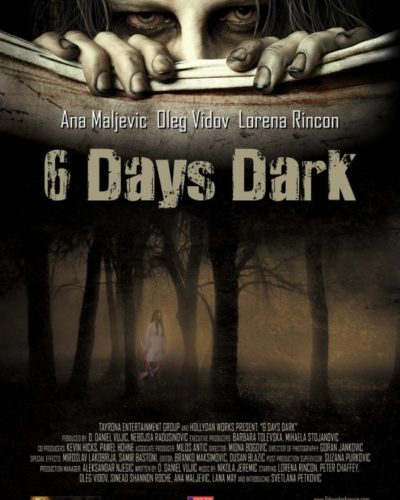Welcome to the Final Bow: “Theatre of the Dead”
“In this theatre, the applause lasts… forever.” Those ominous words set the stage for the 2013 horror flick “Theatre of the Dead,” directed by Patrick J. Gallagher. A seemingly innocuous venue repurposed for a blood-curdling scenario, Gallagher’s film blends the mundanity of a struggling acting troupe’s rehearsal with a horrifying survival game. When the actors find themselves locked in with their director, they are soon forced to face a nightmarish reality that tests the very limits of their sanity and survival instincts.
An Ominous Stage Presence
The atmosphere and tone of “Theatre of the Dead” stand on a foundation of anticipatory dread. The setting itself—a dilapidated theatre—oozes a gothic charm that is as enticing as it is foreboding. Gallagher’s direction reflects a clear understanding of classic horror sensibilities, emphasizing tension build-up to a crescendo of scares rather than relying on constant bombastic terror.
The cinematography and visuals are noteworthy elements in crafting the film’s eerie vibe. Strategic lighting choices cast long, harrowing shadows and define a color palette that oscillates between cold, sterile tones during moments of calm and jarring reds when blood spills. Camera angles are deliberately composed, often reflecting the characters’ mounting paranoia and the audience’s growing unease. Special effects are used sparingly yet effectively, ensuring that the visuals never feel overbearing or unnecessarily grotesque.
Sound is an unsung hero in Gallagher’s horror symphony. Subtle sound effects and a hauntingly atmospheric soundtrack contribute significantly to the film’s unease. Silence, or rather the sudden absence of sound, expertly punctuates scenes, amplifying the impact of the shocks that follow.
Mask and Mirror: Performances and Horror
The performances in “Theatre of the Dead” are, in places, as nuanced as the characters they portray. While some actors manage to evoke empathy and terror commendably, others fall flat, sometimes verging on the melodramatic. It’s a mixed bag in terms of believability, but when the cast hits their emotional beats, the tension is palpable.
The film predominantly entrenches itself within the psychological brand of horror, with supernatural undercurrents that question both the characters’ and viewers’ perceptions of reality. While it does not reinvent the wheel, “Theatre of the Dead” does challenge certain subgenre tropes, particularly in its meta-commentary on the acting profession and the thin line between performance and genuine terror. Elements of gore and shock are present but do not overshadow the psychological manipulation at play—which is where the film truly shines.
Revelation in Horror: Themes and Impact
Beyond the screams and scares, “Theatre of the Dead” offers subtle societal commentary on the pressures of performance art and, perhaps, the human condition’s fragility. The horror serves as an allegory for broader concepts, such as identity, the quest for recognition, and the often-toxic environments that breed desperation. This thoughtful layering adds depth to the movie’s narrative, elevating it above mere scare tactics.
As for the film’s efficacy in terror, “Theatre of the Dead” manages to be intermittently frightening and certainly thought-provoking. Its innovative approach to the ‘locked-in’ scenario presents a welcome change from the usual haunted house or cabin in the woods setups prevalent in horror cinema.
The movie will likely appeal most to horror enthusiasts who appreciate a slow burn and cerebral horror over non-stop action or splatter-fest fans. It’s also fitting for those who relish viewing horror as a vehicle for examining human psychology under distress.
While “Theatre of the Dead” may not stand shoulder to shoulder with seminal works like “The Shining” for its atmospheric mastery or “Saw” for its harrowing game-like scenarios, it does carve its niche in the indie horror scene, worthy of recognition.
In Curtain Call: A Final Evaluation
In conclusion, “Theatre of the Dead” is a carefully constructed psychological thriller with an undercurrent of supernatural tension. It has its share of strengths, notably in atmospheric tension and thoughtful themes, although it occasionally stumbles with uneven performances.
For those who don’t shy away from a fusion of classic theatre and modern horror, Gallagher’s vision may just be the ticket. The squeamish and those put off by intense scenarios might want to steer clear, as the film doesn’t hold back in its more terror-filled moments.
“Theatre of the Dead” ultimately deserves a spot on the playbill for horror aficionados, for whom the combination of theatricality and dread will likely strike a resonant chord. It’s a peculiar piece that, while not for everyone, has its merits clearly spotlighted under the ghostly limelight of its unique setting.




